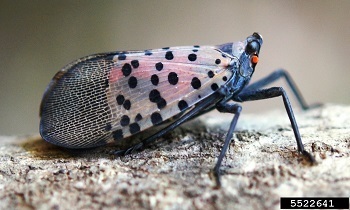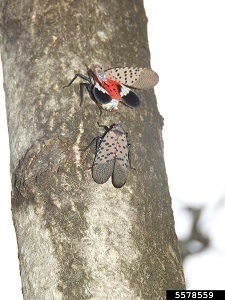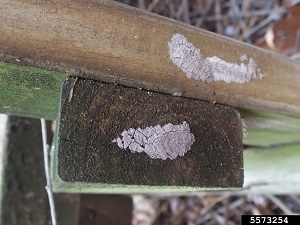Area Video News Headlines
These video news headlines brought to you by these fine sponsors:
MDARD Wants you to Be On The Look Out for Spotted Laternfly
Miranda Cameron
Thu, 28 Jul 2022 08:53:03 EDT
 |
click on the picture to enlarge
|
The Michigan Department of Agriculture and Rural Development is asking for the public's help by being on the lookout for spotted lanternfly, an invasive insect with the potential to seriously affect Michiganís agriculture and natural resources. This insect feeds on more than 70 different plants including; grapes, apples, hops and hardwood trees.
"Our agricultural and natural resources are part of Michigan's identity, and spotted lanternfly has the potential to forever change that landscape," said Robert Miller, MDARD's invasive species prevention and response specialist within the Pesticide and Plant Pest Management Division. "With its ability to wreak havoc on grapes, apples, hops, stone fruits and more, this could be devastating to Michigan's farmers and the state's food and agriculture industry."
Spotted lanternfly with wings folded showing grey wings with black spots
First detected in the United States in 2014 in southeastern Pennsylvania, spotted lanternfly has been spreading rapidly across the northeastern states. To date, infestations have been confirmed in Connecticut, Delaware, Indiana, Maryland, Massachusetts, New Jersey, New York, North Carolina, Ohio, Pennsylvania, Virginia and West Virginia.
Although live spotted lanternfly has not been detected in Michigan, MDARD and the United States Department of Agriculture have confirmed five cases of dead spotted lanternfly found in separate locations across the state. In these cases, the dead insects were found in packaging materials or objects shipped from states with known infestations.
Spotted lanternflies cannot fly long distances, but they lay eggs on nearly any surface like cars, trailers, firewood, outdoor furniture and more. Before leaving an infested area, MDARD is asking people to check vehicles, firewood and outdoor equipment for unwanted hitchhikers. Individuals and businesses receiving shipments from states known to have spotted lanternfly also should be on the lookout for adults or egg masses on goods and packing materials.
"With the current rate of spread, it is possible spotted lanternfly could reach Michigan at any time," Miller added. "Public awareness and reporting are essential to early detection, which provides the opportunity to contain an infestation before it becomes a widespread problem."
Two spotted lanternflies on a tree trunk
Spotted lanternfly causes direct damage by sucking sap from host plants while secreting large amounts of a sugar-rich, sticky liquid called honeydew. This honeydew and the resulting black sooty mold can kill plants and foul surfaces. The honeydew often attracts other pests like yellow jackets, flies and ants, affecting outdoor recreation and complicating crop harvests.
From late summer to the first hard frost, spotted lanternflies are in their adult stage and easiest to identify. Adults are roughly one inch long. Their folded wings are gray to brown with black spots. Open wings reveal a yellow and black abdomen and bright red hind wings with black spots transitioning to black and white bands at the edge.
Female spotted lanternfly lay egg masses in the fall, which resemble old chewing gum, with a gray, waxy, putty-like coating. Egg masses can survive winter temperatures to hatch in the spring. Hatched eggs appear as brownish, seed-like deposits. Spotted lanternfly juveniles are wingless and are black with white spots, developing red patches in their final juvenile stage.
If you find a spotted lanternfly egg mass, juvenile or adult, take one or more photos, make note of the date, time and location of the sighting, and report it to MDARD via email at MDA-Info@Michigan.gov or by calling 800-292-3939. If possible, collect a specimen in a container for verification.
 |
click on the picture to enlarge
|
 |
click on the picture to enlarge
|



